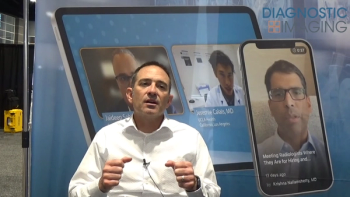
Ikonopedia Launches Next-Generation Breast MRI Reporting Module
Updated tool is designed to reduce reporting complexity for both screening and diagnostic breast MRI, saving time and improving patient safety.
Reporting for screening and diagnostic breast MRI exams could become less complex – Ikonopedia announced the launch of its next-generation structured reporting module on Thursday.
Designed with an intuitive icon-based interface, company officials said, this module is compliant with the latest iteration of the American College of Radiology BI-RADS. Following the model of the existing mammography and ultrasound structured reporting modalities, this breast MRI module can improve physician efficiency by guiding radiologists through BI-RADS criteria to create accurate, natural-sounding descriptions of lesions.
“As we, as an industry, move towards more broadly adopting risk-based screening based on a woman’s personal risk and breast density, the utilization of breast MRI will continue to grow,” said Michael Vendrell, M.D., Ikonopedia co-founder. “This new module streamlines reporting workflow to deliver more accurate diagnoses, reduces the risk of reporting errors, and saves time as radiologists face increasing exam volume and data complexity. These are critical new capabilities to improve patient care and safety.”
For more coverage based on industry expert insights and research, subscribe to the Diagnostic Imaging e-Newsletter
Specifically, according to company information, this new screening MRI modality includes 10 lesion assessment categories that adhere to BI-RADS, and it also offers a new contrast selection dialogue that can synchronize with the diagnostic MRI modality.
Alongside these augmentations, the module has also been outfitted to handle artificial intelligence input, such as Qlarity Imaging’s QuantX, the first computer-aided diagnosis software for breast MRI analysis to receive clearance from the U.S. Food & Drug Administration.
According to one breast imager, the module does positively impact productivity and workflow.
“We’ve been very pleased with the flexibility and efficiency gains from the intuitive user interface in the updated breast MRI reporting tools,” said Erica Guzalo, M.D., breast imaging section chief at Sinai Health in Chicago, “particularly the ability to easily describe trackable entries while maintaining BI-RADS verbiage to create complex reports.”
Newsletter
Stay at the forefront of radiology with the Diagnostic Imaging newsletter, delivering the latest news, clinical insights, and imaging advancements for today’s radiologists.




























